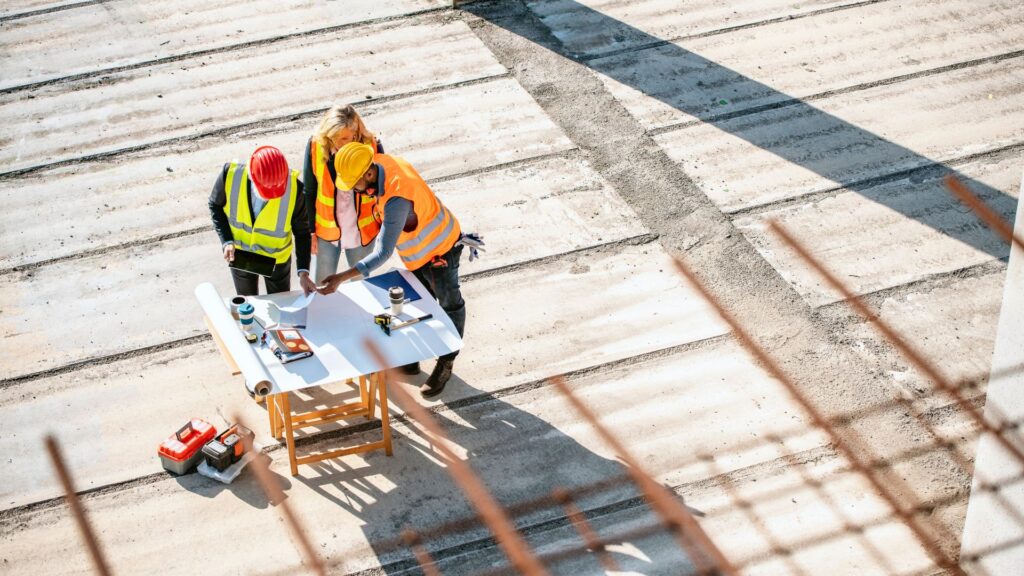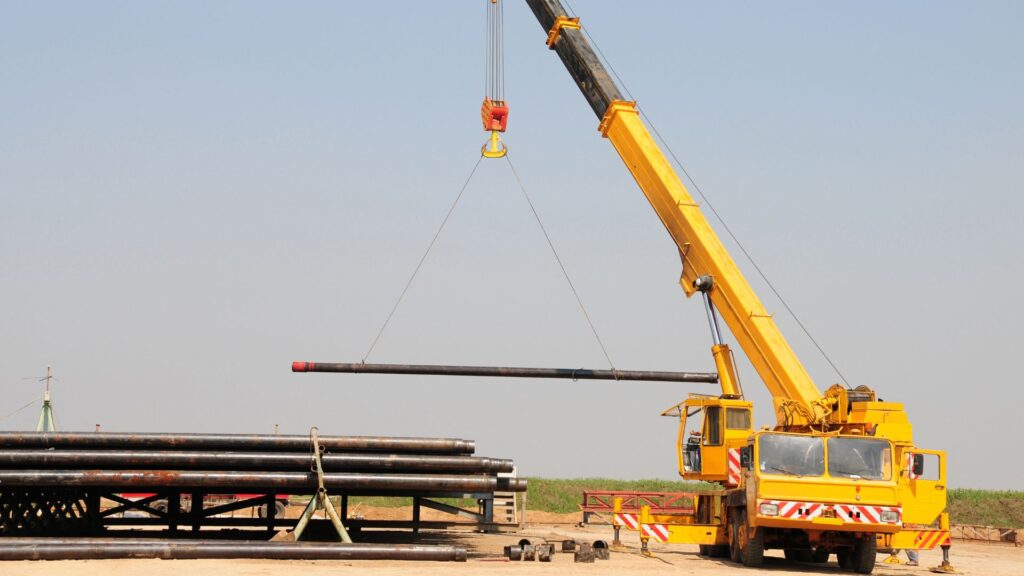When contractors and suppliers are not paid for their work on a construction project in Vermont, they have the option to file a mechanic’s lien to secure the compensation owed to them. A mechanics lien is a legal instrument that grants the unpaid party a security interest in the property, effectively providing a claim against it.
At CRM Lien Services, we specialize in ensuring that you get paid quickly and reliably. We can prepare and file mechanics liens for you in accordance with Vermont law, taking into account Vermont construction lien law and state-specific rules and regulations, including the need for an adequate and ascertainable description of the real estate.
This guide outlines the specific rules, necessary procedures, and critical deadlines you need to be aware of to successfully file a mechanics lien Vermont.

Key Takeaways
- Wide Range of Eligible Filers: In Vermont, contractors, subcontractors, suppliers, and potentially design professionals like architects and engineers can file a mechanics lien. This broad eligibility ensures that various parties involved in construction projects have the means to secure their right to payment.
- Strict Filing Deadlines: Mechanics liens must be filed within 180 days after payment becomes due for the last labor or materials provided. Adhering to this deadline is crucial for maintaining full lien protection and ensuring the lien is enforceable against subsequent purchasers or encumbrances.
- Minimal Legal Requirements with Recommended Best Practices: Vermont requires only the payment due date and the claimant’s signature on a mechanics lien. However, including a detailed property description and a clear account of the work performed is advisable to strengthen the lien and minimize the risk of it being challenged.
- Vermont Construction Lien Law: The Vermont Construction Lien Law allows for the filing of mechanics and materialman’s liens on construction projects. It includes provisions for recording notices of liens and actions to enforce those liens. Understanding this law is crucial for contractors and suppliers to ensure they follow the correct procedures and protect their right to payment.
Overview of Vermont Mechanics Lien Law
Vermont mechanics lien law is a crucial legal framework designed to protect the rights of contractors, subcontractors, and suppliers involved in construction projects. This law allows these parties to file a lien against a property if they are not paid for their work or materials. Essentially, a mechanics lien serves as a security interest in the property, ensuring that those who contribute to its improvement are compensated.
To file a mechanics lien in Vermont, certain key elements must be met. First, the claimant must have provided labor or materials for the construction, repair, relocation, or modification of improvements to real property. This includes a wide range of activities, from building new structures to making significant repairs or alterations. The lien must be filed within 180 days after the payment becomes due for the last labor or materials provided. Adhering to this deadline is critical to maintaining lien rights.
The mechanics lien law in Vermont is designed to be straightforward, requiring minimal information on the lien form. However, it is advisable to include detailed descriptions of the property and the work performed to strengthen the lien and reduce the risk of it being challenged. By understanding and following Vermont’s mechanics lien law, contractors and suppliers can better secure their right to payment and protect their financial interests.
Who Is Eligible to File a Vermont Mechanics Lien?
In Vermont, any individual or company that supplies labor or materials for the construction, repair, relocation, or modification of such improvements to real property, under an agreement with the property owner, the owner’s agent, or any contractor or subcontractor, is eligible for mechanics lien rights. It appears that subcontractors and suppliers at all levels are permitted to assert a mechanics lien in Vermont. However, it remains uncertain whether design professionals, such as architects and engineers, have the right to file a lien in the state.
Can an Unlicensed Contractor Legally File a Vermont Mechanics Lien?
Vermont does not enforce specific licensing prerequisites for parties wishing to file a mechanics lien. However, it is strongly recommended not to undertake work that legally requires a license unless you have obtained the appropriate licensure.
Does a Vermont Mechanics Lien Require a Legal Property Description?
No, apart from the date when payment is due (if known) and the claimant’s signature, Vermont law does not specify any mandatory information to include in a mechanics lien. While it’s best practice to obtain a legal description of the property, it appears that any property description is acceptable in Vermont. The more detailed and precise the description, the less likely the lien will be challenged.
Where Should I File and Record a Vermont Mechanics Lien?

In Vermont, to ensure your mechanics lien is valid, you must file the lien documents with the clerk’s office in the specific town where the construction work occurred. It’s important to note that each town clerk’s office may have its own set of rules and procedures. Therefore, it’s essential to familiarize yourself with the local requirements of the town to correctly record your mechanics lien.
Does a Vermont Lien Take Priority Over Existing Mortgages or Other Construction Loans?
No, in Vermont, mechanics liens do not supersede prior recorded mortgages or construction loans. Instead, they adhere to the “first to record, first in the right” principle. This means that any encumbrance, such as a mortgage or lien, that was recorded before the filing of the Notice of Mechanics Lien holds priority over the mechanics lien. Conversely, the mechanics lien takes precedence over any encumbrances that are recorded after the Notice of Mechanics Lien has been filed.
Who Is Responsible for Cancelling a Vermont Mechanics Lien After Payment?
Vermont mechanics lien statutes do not explicitly specify who must release the lien once payment has been made. However, it is generally understood that any payment made to a lien claimant after the filing of a lien is given with the expectation that the claimant will release the lien in exchange for that payment.
Is It Necessary to Send a Vermont Preliminary Notice?
Generally speaking, Vermont does not require contractors or suppliers to send a preliminary notice to maintain the right to file a bond claim. However, because the specific terms outlined in the bond control the procedures for all non-highway public projects, it is recommended to obtain a copy of the bond. This allows you to determine whether a preliminary notice is required according to the bond’s provisions.
Property Owner Rights and Responsibilities
As a property owner in Vermont, it is essential to be aware of your rights and responsibilities concerning mechanics liens. When a contractor or supplier files a lien against your property, it signifies that they have not been paid for their work or materials. This lien can have significant implications, including the potential for foreclosure if the debt remains unpaid.
One of the primary responsibilities of property owners is to ensure prompt payment to contractors and suppliers. This not only helps avoid the filing of a mechanics lien but also fosters good relationships with those working on your property. Additionally, it is crucial to vet contractors thoroughly before hiring them. Checking references, verifying licenses, and ensuring they have a good track record can help prevent issues down the line.
Monitoring payments to subcontractors and suppliers is another critical responsibility. Even if you pay your general contractor, if they fail to pay their subcontractors or suppliers, those parties can still file a lien against your property. To mitigate this risk, consider requiring lien waivers from contractors and suppliers as a condition of payment. This document confirms that they have been paid and waive their right to file a lien.
Understanding your rights and responsibilities under Vermont mechanics lien law can help you protect your property and ensure that all parties involved in your construction project are fairly compensated.
Contractor and Supplier Rights and Responsibilities
Contractors and suppliers in Vermont have robust rights under the state’s mechanics lien law, allowing them to file a lien if they are not paid for their work or materials. However, to ensure the lien is valid and enforceable, it is crucial to adhere to specific requirements and deadlines.
One of the primary responsibilities is maintaining accurate records of all work performed and materials supplied. This documentation is essential when filing a mechanics lien, as it substantiates your claim. Additionally, it is advisable to send a preliminary notice, even though it is not required by Vermont law. This notice can promote transparency and encourage prompt payment.
Timely filing of the mechanics lien is another critical responsibility. The lien must be filed within 180 days after the payment becomes due for the last labor or materials provided. Missing this deadline can result in the loss of lien rights. Once the lien is filed, it must be recorded with the town clerk’s office in the town where the property is located.
If payment is still not received after filing the lien, contractors, and suppliers, have the right to enforce the lien through foreclosure. This involves initiating legal proceedings to sell the property and recover the owed amount. Given the complexity of this process, consulting with a construction attorney is advisable.
By understanding and fulfilling their rights and responsibilities, contractors and suppliers can effectively use Vermont’s mechanics lien law to secure their right to payment and protect their financial interests.
5 Facts About Vermont Mechanics Liens

In Vermont, contractors and suppliers hold significant mechanics lien rights. If they are not paid for their work on a project within the state, filing a lien is an effective method to expedite payment and protect their interests. However, specific rules and requirements must be followed carefully. Below are five essential things you need to know about Vermont’s mechanics lien laws.
Vermont’s Construction Lien Law: This law allows for the filing of mechanics’ liens and material man’s liens on construction projects. It includes specific provisions and sections that outline the processes and implications involved in filing such liens.
1. All Tiers Can File a Vermont Mechanics Lien
Mechanics lien Vermont law provides broad protection regarding who can file a lien. Any party that furnishes labor or materials for erecting, moving, or altering improvements to real property—under a contract with the property owner, the owner’s agent, a contractor, or a subcontractor—is entitled to lien rights. There appears to be no restriction on the tier level of subcontractors eligible to file a lien. However, it remains unclear whether design professionals, such as architects and engineers, have the right to file a lien in Vermont.
2. Uncertainty Surrounding the Deadline to File a Vermont Mechanics Lien
The deadline for filing a mechanics lien in Vermont is somewhat ambiguous. The law states that a lien must be filed within 180 days from the date when payment became due and payable for the last furnishing of labor or materials. The confusion arises over whether this 180-day period begins from when payment was due for your last work or from when payment became due for the last work on the project as a whole. To avoid missing the filing window, it’s advisable to file your lien within 180 days of the date payment became due for your own final contribution, ensuring compliance with the project’s overall timeline.
3. No Requirement for Preliminary Notice
Unusually, Vermont does not require a preliminary notice to preserve lien rights. While this simplifies the process, sending an informational preliminary notice or a notice of intent to lien can still be a good strategy. Doing so may encourage prompt payment and fosters open communication between parties involved in the project.
4. Signature of the Claimant Is Required on the Mechanics Lien
Vermont’s statutes require minimal information on the mechanics lien document—specifically, the date when payment became due and the claimant’s signature. Although not mandated, including a legal description of the property or other identifying details is best practice for proper indexing and to strengthen your claim. Additionally, providing a brief description of the work performed and the party for whom it was done can be beneficial.
5. No Obligation to Notify Parties After Recording the Lien
There is no legal requirement in Vermont to notify any party that you have recorded a lien with the town clerk. However, it is generally advisable to inform both the hiring party and the property owner that the lien has been filed. This proactive step can facilitate communication and may expedite the payment process, helping to resolve the outstanding debt more quickly.
How to File a Mechanics Lien in Vermont?
If you’ve been left unpaid for your work on a construction project in Vermont, filing a mechanics lien might be the solution you need. A mechanics lien is a powerful legal tool that contractors and suppliers can use to secure their right to payment. It is crucial to enforce a lien claim if payment is not received to ensure your rights are protected. This comprehensive guide will walk you through everything you need to know about filing a mechanics lien in Vermont.
Verify Your Lien Rights Before Filing
The first crucial step is to determine whether you have the legal right to file a mechanics lien in Vermont. Under Vermont law, any person who performs labor or supplies materials for the construction, repair, moving, or alteration of improvements on real property is entitled to a lien. This broad definition includes general contractors, subcontractors, and material suppliers at any tier. However, it’s unclear whether design professionals like architects and engineers have lien rights in Vermont.
While Vermont does not require you to send a preliminary notice before filing a mechanics lien, it’s still a good practice. Sending a preliminary notice can offer benefits such as promoting transparency and possibly expediting payment.
Attempt Resolution: Send a Notice of Intent to Lien
Before proceeding to file a lien, consider sending a Notice of Intent to Lien to the property owner. This is a formal letter indicating your intention to file a lien if payment is not received promptly. Although Vermont doesn’t mandate this notice, it’s an effective way to alert the owner of the outstanding payment and can often resolve the issue without further legal action.
Step 1: Prepare Your Vermont Mechanics Lien Form
Required Information
Interestingly, Vermont’s statutes require minimal information on the mechanics lien form:
- Date When Payment Was Due
- Your Signature
Despite these minimal requirements, it’s advisable to include additional details to strengthen your claim and avoid potential challenges.
Recommended Information
- Your Name and Address: Provide your full legal name or the registered business name, including any designations like LLC or Inc.
- Property Owner’s Information: Include the full name and address of the property owner. If there are multiple owners, list all of them.
- Property Description: While a full legal description isn’t mandatory, including it can help avoid any confusion. Providing as much detail as possible is beneficial.
- Amount Owed: State the exact amount due for your work or materials. Do not include attorney’s fees or unrelated charges, as overstating the amount can lead to legal repercussions.
- Description of Work Provided: Offer a brief overview of the labor or materials you supplied. This can help substantiate your claim if it’s contested.
- Last Date of Work and Payment Due Date: Indicate the last day you provided services or materials and when payment was due. This information is crucial for determining the filing deadline.
Sign and Notarize the Document
After completing the form, sign it in the presence of a notary public. Vermont requires mechanics liens to be notarized to be legally valid.
Step 2: File Your Vermont Mechanics Lien

Where to File the Lien
File your mechanics lien with the town clerk’s office in the town where the property is located. Each town may have specific requirements and fees, so it’s important to contact the office beforehand to ensure compliance.
Deadline for Filing
The deadline for filing a mechanics lien Vermont is somewhat ambiguous. The law states you must file within 180 days after payment becomes due for the last labor or materials furnished. It’s unclear whether this refers to when your payment was due or when the last payment on the entire project was due. To be safe, file within 180 days of when your payment became due.
Methods of Filing
- In-Person Filing: Visiting the town clerk’s office in person is recommended. This allows you to address any issues immediately and ensures your lien is filed on the same day.
- Filing by Mail: If mailing your lien, allow extra time for delivery and processing. Include the correct filing fee and a self-addressed, stamped envelope if you need a copy for your records. Be cautious, as errors or delays could cause you to miss the filing deadline.
After Filing: Next Steps
Even after filing your mechanics lien, further action may be necessary to secure payment. For complex cases, consider consulting with Vermont construction attorneys to navigate the legal complexities effectively.
Option 1: Enforce (Foreclose) the Mechanics Lien
If payment is not received, you have 180 days to initiate a foreclosure action to enforce your lien. This period starts from either when payment became due or when the lien was filed, depending on your specific circumstances. Foreclosure involves legal proceedings, so consulting a construction attorney is advisable.
Before initiating foreclosure, you might send a Notice of Intent to Foreclose to the property owner as a final warning.
Option 2: Release (Cancel) the Mechanics Lien
If you receive payment, it’s standard practice to release the mechanics lien. While Vermont doesn’t specify the procedure for releasing a lien, filing a release document with the same office where you filed the lien is customary. This action clears the lien from the property’s title records.
Dispute Resolution and Litigation
Disputes over mechanics liens in Vermont can sometimes escalate to the point where litigation is necessary. Understanding the process of dispute resolution and the potential consequences of unresolved disputes is crucial for both contractors and property owners.
When a dispute arises, the first step is often to attempt resolution through negotiation or mediation. This can be a less costly and time-consuming approach compared to litigation. However, if these efforts fail, filing a lawsuit to enforce the mechanics lien may be the next step. This legal action, known as foreclosure, seeks to sell the property to satisfy the debt owed to the lien claimant.
Litigation can be complex and requires a thorough understanding of Vermont’s mechanics lien law. Therefore, seeking the advice of a qualified construction attorney is highly recommended. An attorney can help you navigate the legal process, represent your interests in court, and work towards a favorable resolution.
Failing to resolve a dispute over a mechanics lien can have serious consequences. For property owners, it can lead to foreclosure and the loss of the property. For contractors and suppliers, it can result in financial losses and damage to their credit scores. Therefore, addressing disputes promptly and seeking professional legal advice is essential to protect your interests.
By understanding the dispute resolution and litigation process, parties involved in construction projects can better navigate conflicts and work toward a fair and timely resolution.
Get in Touch
Filing a mechanics lien in Vermont is a vital strategy for contractors and suppliers to secure the payments they deserve. By following the specific rules, meeting all deadlines, and accurately completing the necessary forms outlined in this guide, you can effectively protect your financial interests and ensure timely compensation for your work and materials.
At CRM Lien Services, we have been serving customers across the country with required reference documentation for lien claims since 1986. We assist property owners in navigating the mechanics lien process, informing them about their rights and responsibilities, including providing notices, securing payment, and releasing mechanic’s liens.
We have a wealth of expertise, are licensed and insured, and have a team of highly knowledgeable document processors. If you’re looking for a straightforward process for filing a mechanics lien, give us a call or shoot us an email.
